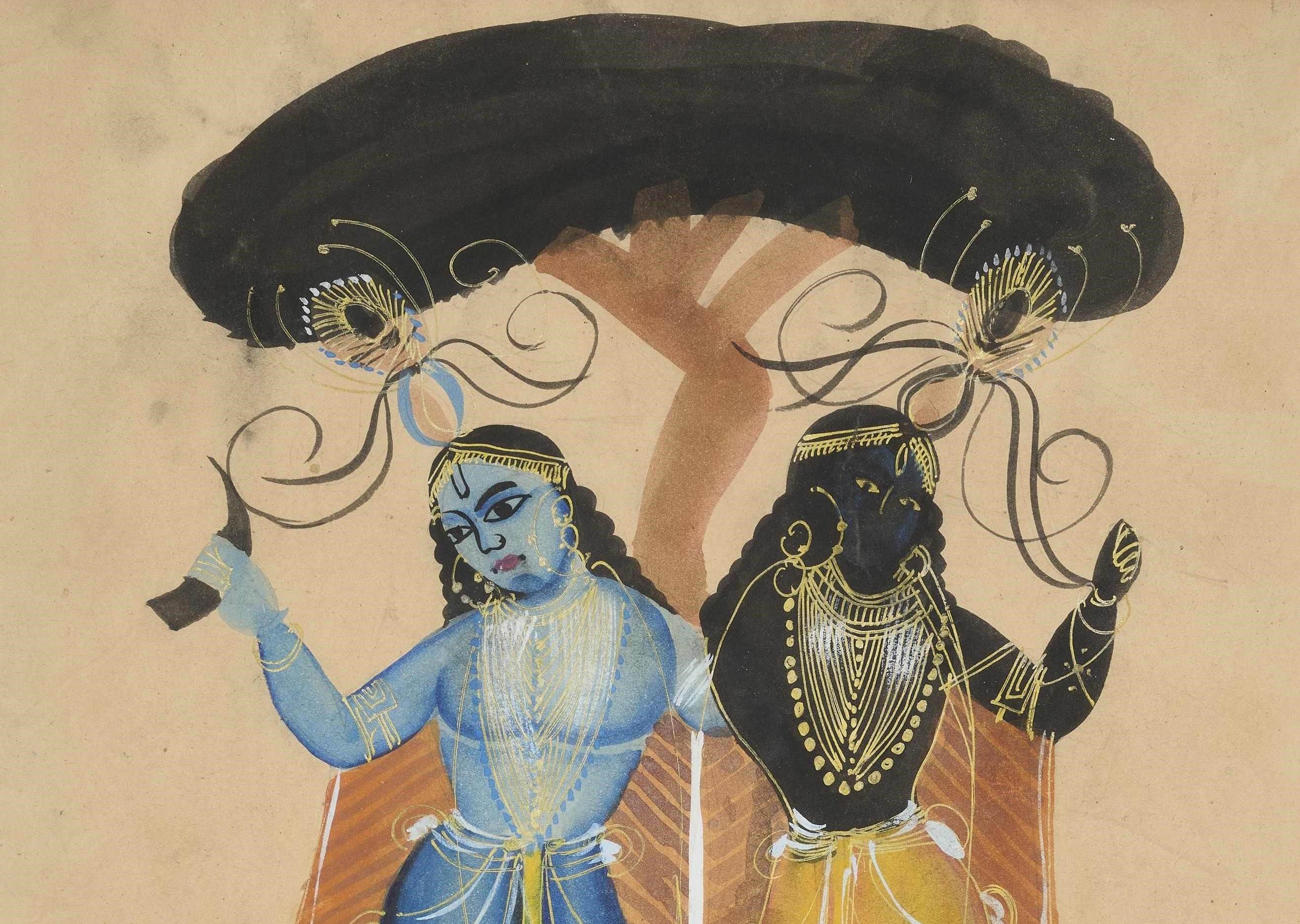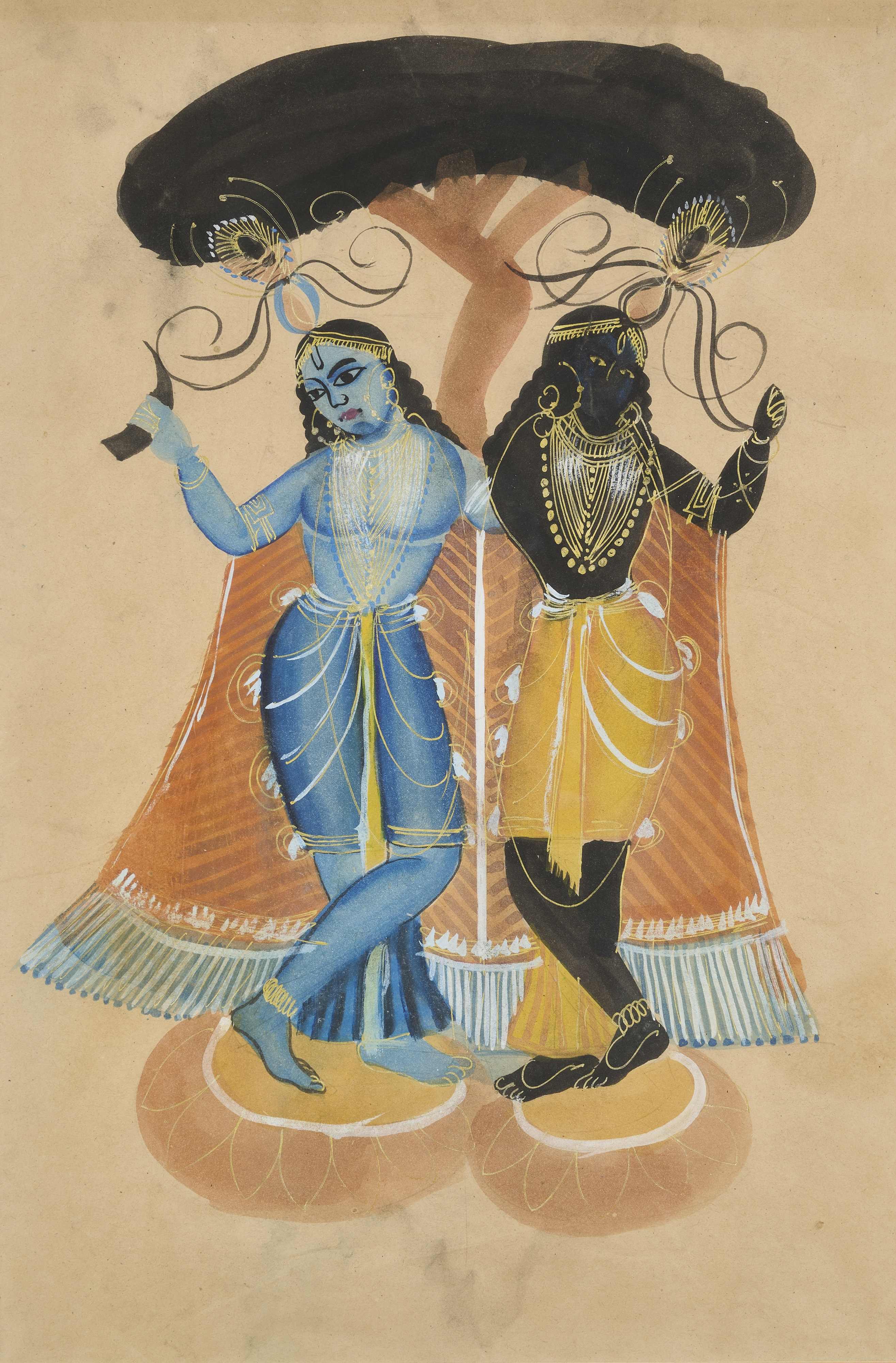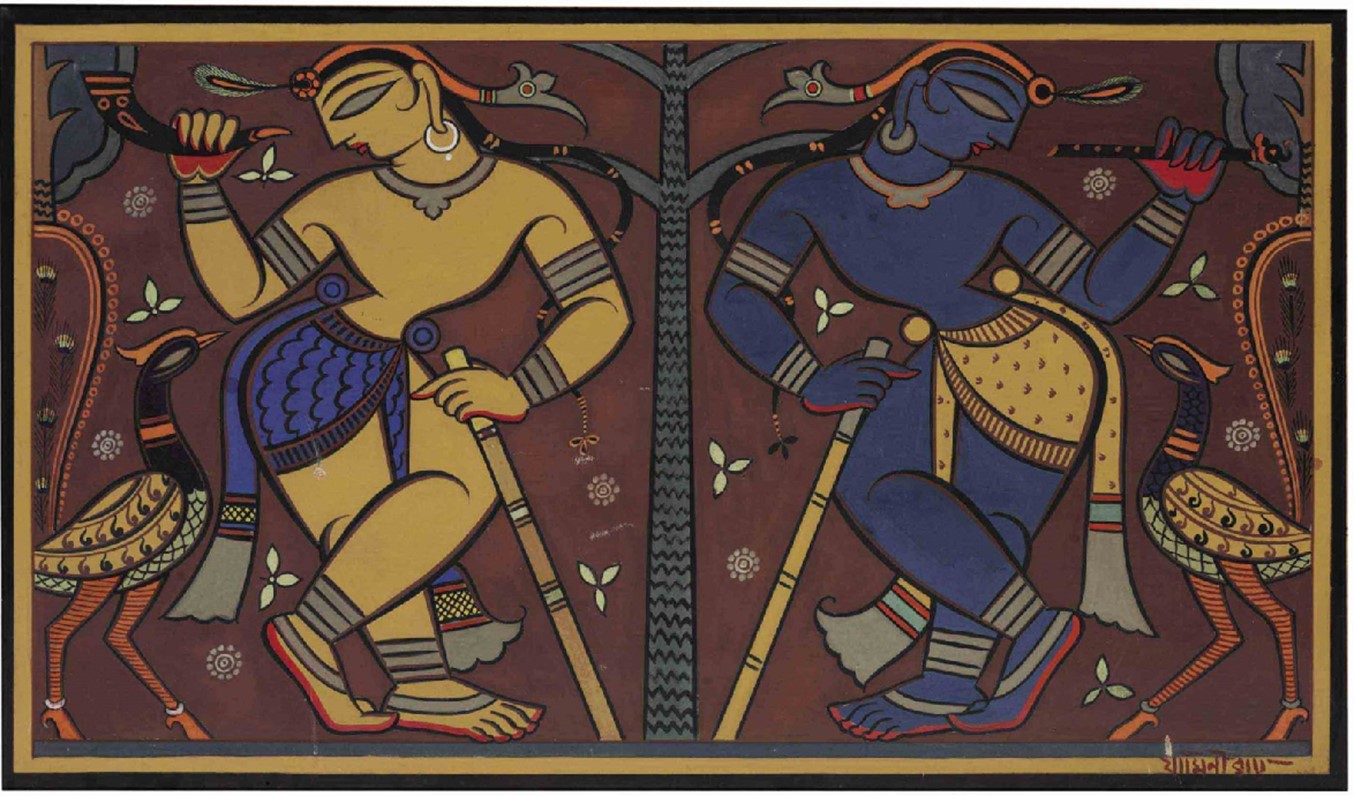

In the heart of Kolkata, India, is the Kalighat Kali Temple, one of the most powerful and divine places of worship in India with a history of over two hundred years. The word Kalighat stems from two words. ‘Kali’, which refers to the Goddess Kali who resides in the temple and ‘Ghat’ or riverbank where the temple, one of the 51 ‘shakti peethas’ (Goddess pilgrimages) is located in India.
It was near this revered monument that the Kalighat form of art originated. A community called the ‘patuas’ residing near the temple premises began producing works of art narrating mythological tales. Originally, Kalighat painting was created on elaborate scrolls for devotees who travelled from near and far to worship Goddess Kali. Interestingly, each little region of India has its own special way of narrating tales and sagas through the medium of scrolls.
Bold outlines and vibrant colours would be painstakingly created by the artisan using natural pigments with fine brushes made from squirrel hair. Turmeric for yellow, blue from the petals of the flower Aparajita, red from beetroot and black from soot.
With time and industrialisation, handmade paper was replaced with factory made mill paper while locally made dyes were swapped with watercolours. By the late 1800’s, Kalighat painting saw a gradual decline but the design and style of the Patua artisans became hugely inspirational for artists of the Bengal revivalist movement.
Today, Kalighat painting is a rare and exquisite form of art, with the Victoria and Albert Museum in London housing possibly the largest public collection.

A Kalighat painting depicting Krishna and Balarama (Lot 292), Olympia Auctions.
The upcoming Olympia ‘Indian, Islamic, Himalayan and South-East Asian Art and Greek and Roman Antiquities’ auction on 4th June features one such exemplary work.
Lot 292 features Krishna and Balarama poised arm in arm. The painting has all the characteristics of a traditional Kalighat painting. A neutral background, gold and silver embellishment of jewellery and the two main characters with beautiful, almond shaped eyes. The subject of the two brothers, Krishna and his elder sibling Balarama is a common theme explored by the Kalighat artisans. One such rare piece of work is housed at the V&A as well.
Balarama is traditionally depicted with a fair complexion but in this particular work he is featured with blue toned skin. This is typically symbolic of Lord Krishna. Both deities are shown with peacock crowns and delicately pleated dhotis. Balarama on the left carrying a buffalo horn, a tool he is often associated with while Krishna with his mesmerising flute.

Untitled (Krishna and Balarama), Jamini Roy, Christies
Many years later, Indian artist Jamini Roy drew inspiration from this Kalighat style of painting of the brothers and made his very own version. The original Kalighat style of painting remains a collectors piece, with Krishna and his beloved Balarama, celebrating an unbreakable bond of brotherhood. See image above.
By Brijeshwari Gohil